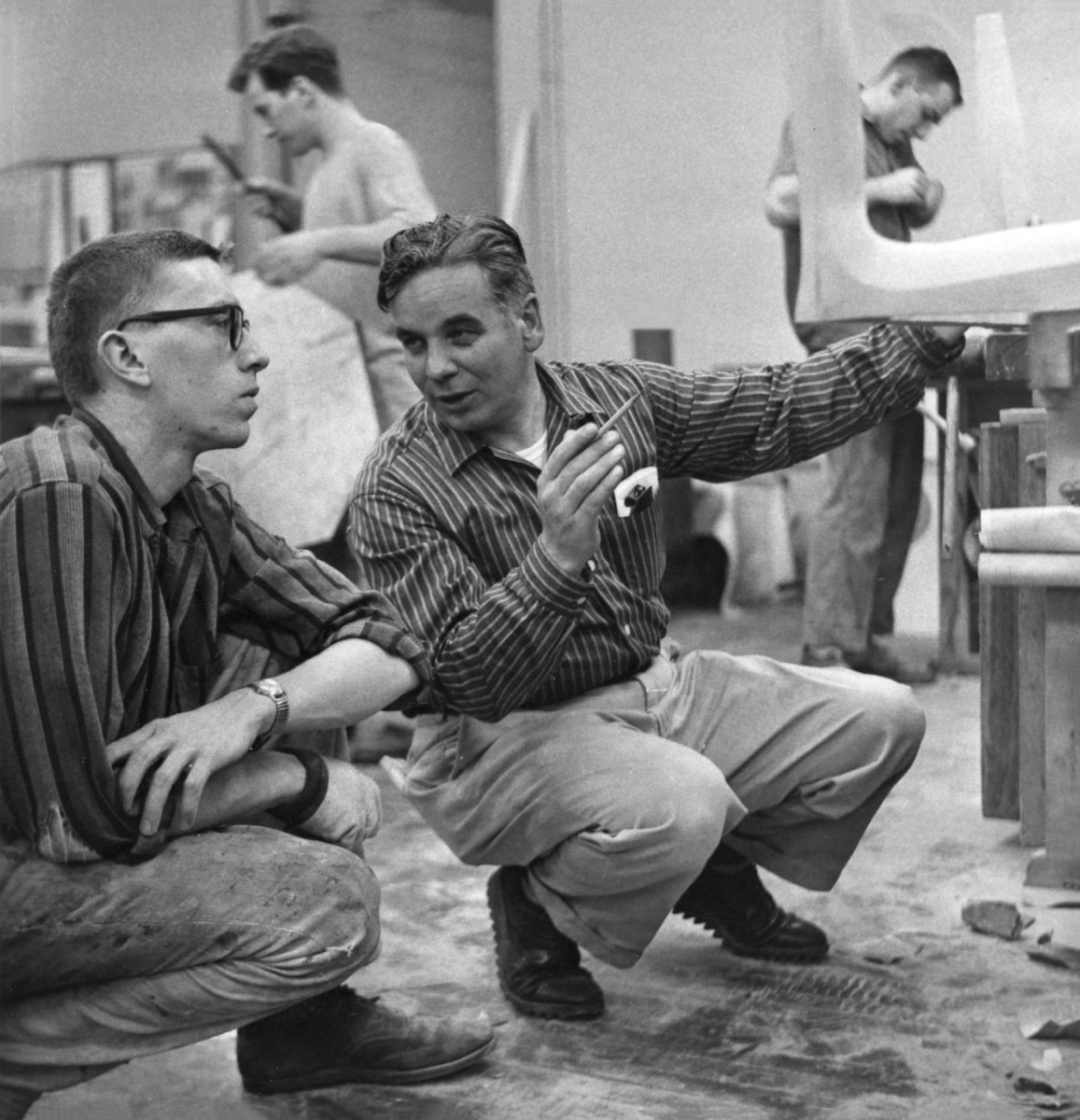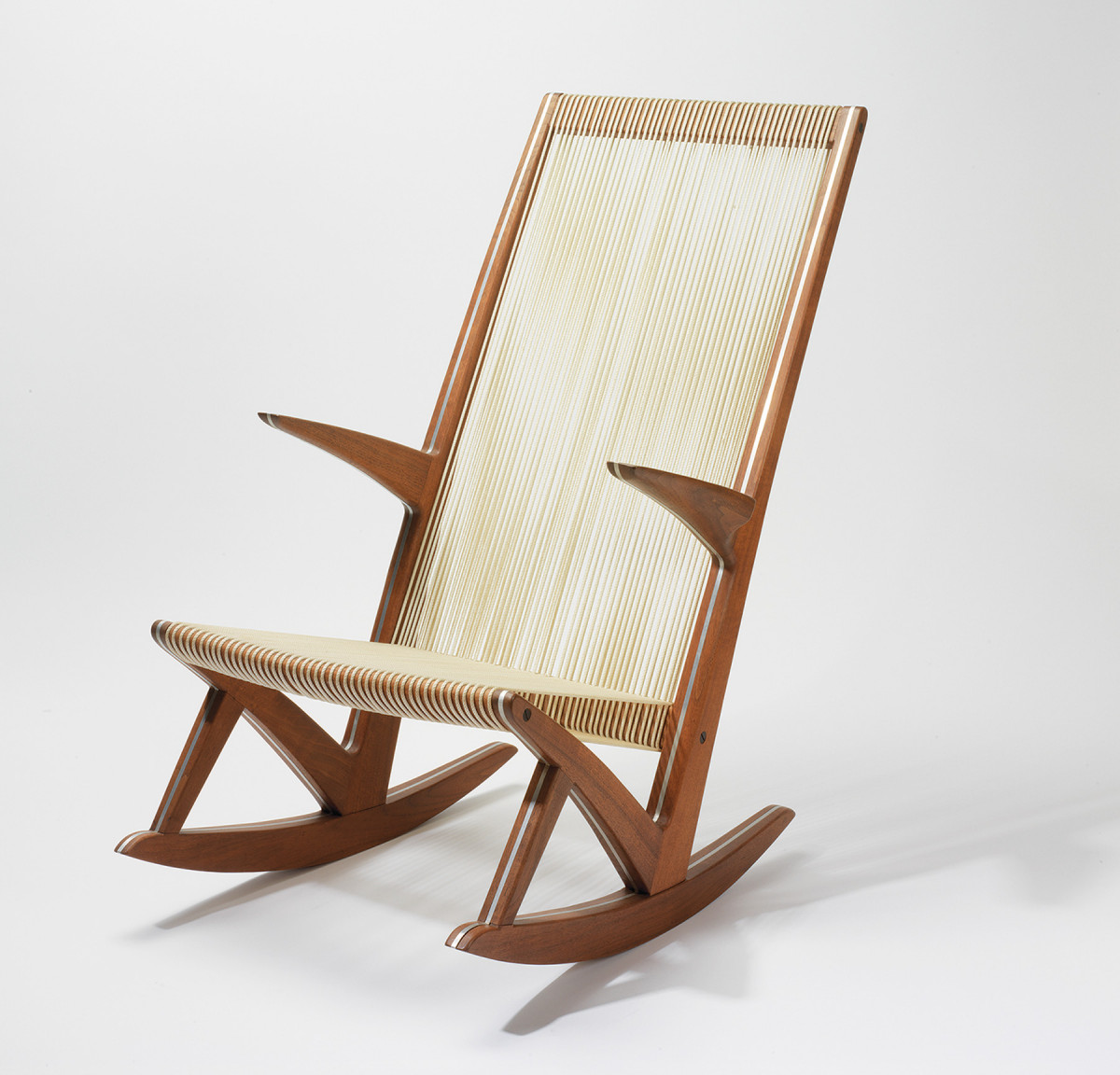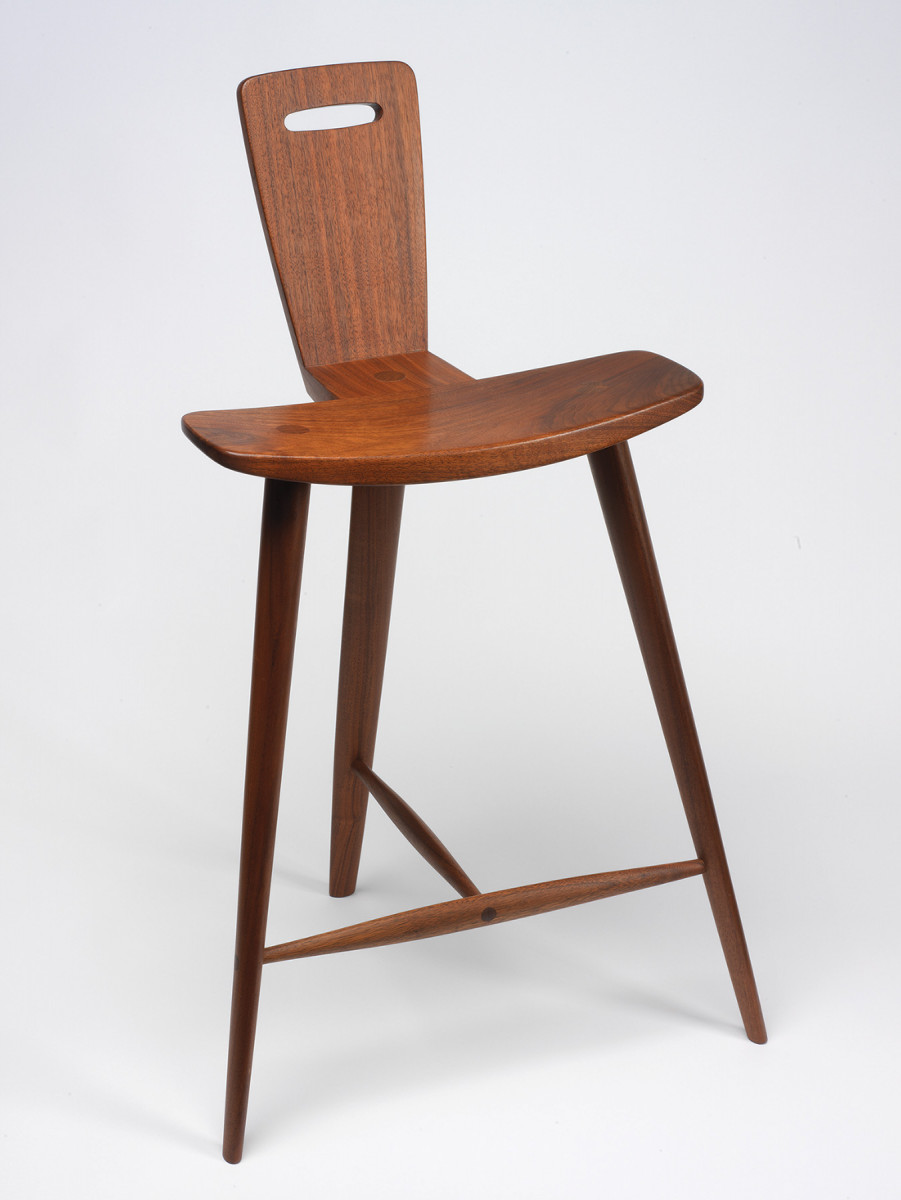We may receive a commission when you use our affiliate links. However, this does not impact our recommendations.

Tage Frid (right) helping a student at the School for American Crafts in Rochester, New York.
Through teaching, this master craftsman’s work lives on.
Early on in my woodworking career I discovered Tage Frid and his iconic three-volume book set, Tage Frid Teaches Woodworking, and it forever changed how I approach the craft and how I teach others. In the text, Tage teaches you virtually all the traditional woodworking joints, common tools and techniques so that you can take on any sort of project that comes your way. This breadth of knowledge is freeing—you can solve complex construction problems independent of workshop conditions. This understanding will also improve your design skills.
Meet the Master Craftsman
Tage Frid was a Danish-born woodworker who helped revive the art of handmade furniture in America. He helped start the modern studio furniture movement and influenced generations throughout the years he taught at the Rochester Institute of Technology’s School for American Crafts and started the furniture design program at the Rhode Island School of Design. He was Fine Woodworking’s first contributing editor and amassed a sizeable body of written work there. His books were published by Taunton Press.
Tage was a gifted teacher with an acerbic wit and the ability to read a room. When asked about teaching repetitive tasks such as cutting the same old dovetail Tage responded, “Maybe you left too early. I always demonstrate difficult joints and techniques depending on what the audience wants. The dovetail is just the overture. What I like about teaching is that I learn something new every day. A student asks me, why can’t I do it this way, and I think, why not? Then we figure it out.”
Design Around Construction

A rocking chair, circa 1984, made with an aluminum frame, sandwiched between walnut, with nylon parachute cords for the seat.
Tage’s design philosophy focused on teaching solid joinery; form should follow function. He would always remind his students that wood has a beauty of its own that should be enhanced and not hidden, and that developing an innate sense of proportion was the product of a keen eye for detail.
Tage believed that a designer should understand the medium he or she was working with while also understanding the needs of the customer. As a craftsperson, you could easily tweak a design to better suit a client as opposed to a factory that would have a lot more overhead. Tage also stressed production techniques that would allow folks to make a living from woodworking and stay competitive when compared to comparable factory-made furniture.
The Infamous Critique
His pragmatic approach to design and construction favored clean, modern lines, free from ostentatious details (typical of Danish-Modern furniture). Tage’s teaching style ensured that his students could build in any style and encouraged his students to experiment with design.
This freedom of design didn’t come without a price. Known for his sharp tongue and impish smile, Tage wasn’t shy about expressing his thoughts on a design and many of his students found the critiques to be nerve-wracking as they were often accompanied with a biting zinger such as, “Oh, good curve. Too bad it’s the wrong one.” Or, “Nice dovetails. What’d you use, a chainsaw?” The goal wasn’t to put anyone down, it was to help each student stay humble and push him- or herself to reach new heights in a paternal kind of way.
Notable Works

The iconic Tage Frid 3-legged stool (1982), made from walnut.
Tage enjoyed a career of more than 50 years as an active cabinetmaker, but most folk likely picture his iconic 3-legged stool when they think of his work. The design for this stool was conceived while watching a horse show and sitting on a fence and realizing how it supported him. The stool supports your ‘rump’ and the underside of your thighs, and the back supports your lower back at a comfortable angle. From there the seat, back and leg structure were worked out and the lines and joinery refined until they reached the form you see in the finished piece.
The austere lines of the stool are interesting from all angles. When approaching the stool, the rear leg almost disappears visually; the form draws you in. When you sit on the stool it’s surprisingly comfortable to sit on but also has a sturdy feel. The form is versatile enough that you can turn the chair around and comfortably sit on it facing the other way.
Volume three of Tage Frid Teaches Woodworking focused on specific furniture projects that leverage the myriad techniques taught in the first two volumes. Many of the projects are later forms that Tage refined over his career and they range from a drafting table and iconic Scandinavian workbench with a shoulder and tail vise, to a wide range of chair and table variations, to a grandmother clock and built-in cabinets.
During Tage’s long career, he worked on a wide variety of projects (especially when compared to some of his contemporary craftsmen like Sam Maloof, George Nakashima or Wharton Esherick). Tage’s work included turned wooden bowls, executive office furnishings, ship interiors, kitchen cabinetry, altars and large crucifixes. Many of these and similar projects aren’t easily moved and thus don’t hit the secondary market as often. Tage lamented that he wished he took more photos of his earlier works. Nonetheless these often large and challenging projects helped to further demonstrate the broad applicability of his design philosophy.
More importantly, Tage’s devotion to educating generations of designers and makers has had a lasting impact on the studio furniture movement. While finding Tage’s furniture pieces in the wild can be challenging, his impact can be witnessed in the work of the men and women who directly studied under him, and his students or those, like me, who learned a lot from his books and magazine articles. I highly encourage you to seek out Tage’s writings and allow the Great Dane to help guide you on your woodworking journey.
Here are some supplies and tools we find essential in our everyday work around the shop. We may receive a commission from sales referred by our links; however, we have carefully selected these products for their usefulness and quality.









